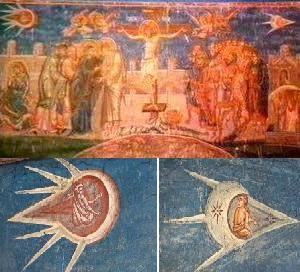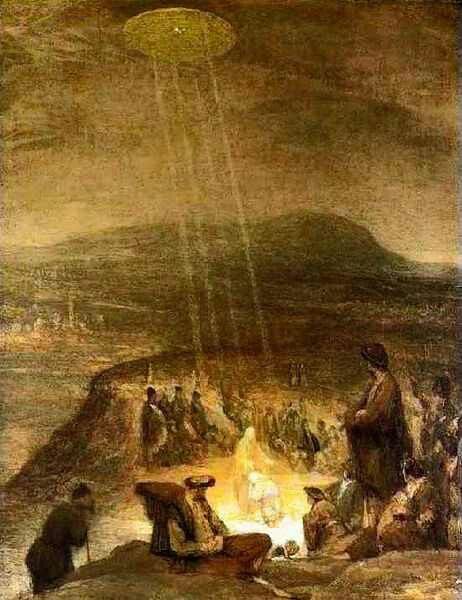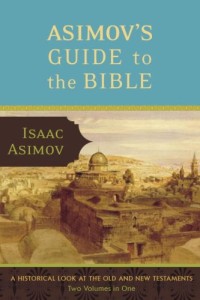
I’ve been questioning things in the bible since I started teaching Sunday School to younger kids when I was in the eighth grade. Yes, I was more of a babysitter than a teacher, but I didn’t know that at the time. So I took my job seriously. While preparing for one of my Sunday morning lessons, I read Genesis 1:26, which says: And God said, Let us make man in our image, after our likeness.
That is when the questioning started. Who is the “us” and the “our” in that passage? Through the years I have posed the question to numerous religious scholars with less than satisfactory answers. Ike Fehr, my guest blogger, offers the first plausible explanation to satisfy my curiosity.
(ProbeNote: In an effort to authenticate, at the bottom of the guest post, I provided notes that offer more information about the experts quoted.)
The Plurality of Gods by Ike Fehr
(IkeNote: In these posts Bible quotations are printed in red. Quotations from other writers are in blue, and my own quotes and paraphrases are in pink.)
At the declaration that one believes in more than one God, one is branded a heretic, lunatic or a pagan. However, in this brand of theology, the word “God” no longer carries the connotation that it has held throughout church history.
If one believes that the God of the Old Testament is a saucerian, it is logical to suppose that He is not the only being who developed to this point of eminence. Therefore, one can surmise that there are also other gods of a like nature. This thought brought to its conclusion is the basis on which “Spaceship Theology” rests.

For the benefit of those astronomers who are searching outer space for signs of intelligent life; for scholars, and sceptics, who say there is no evidence that extraterrestrials have ever visited our planet, let me quote…
…people throughout the Early World believed that E.T’s, from the Pleiades, civilized their people and that these beings were worshipped as gods. ( Alien contact – Fact or Fiction. By: Leonard Farra)
Concerning the multiplicity of the gods, the Epic of Gilgamesh tells us that:
the gods are created beings. When on high the Heavens had not been named, firm ground below had not been called by name…when no gods whatever had been brought into being, uncalled by name, their destinies undetermined – then it was that the gods were formed within them. (Archaeology and The Old Testament, James B. Pritchard, (Princeton University Press, Princeton, N.J.)
The first part of this quote has such a strong resemblance to Genesis 1 that one cannot help but believe that the writer of Genesis copied from the Epic of Gilgamesh.
Biblical Records
Let’s look at a few quotations from the Biblical records.

In the beginning God (Gen.1:1). Even fundamentalist believers accept that the word, God, is a plural form of the word. Dr. James Strong, a Methodist Theologian, in his Dictionary of Hebrew Words of the Old Testament gives this definition of the word, God:
The plural form of the Deity, in English especially used with the article.
Therefore, using Strong’s definition, we should read Gen.1:1 like this: in the beginning the gods created the heaven and the earth.
The words, God and Gods — according to Dr. Strong — were the same. He reasons that at the time the Old Testament was written, the word was used in speaking to or about magistrates. For this reason the word, God, is not the majestic word Bible teachers have led us to believe it is.
The “Us” in Scripture
Then God said, “Let us make man in our image” (Gen. 1:26). The obvious question arises: to whom was God speaking when he said: let us make man in our image?
He must be speaking to more than himself. Why would He say our image if there were only one God? If these gods were only one God, why would he speak to Himself? Why not just think, “I will make man in my own image”, and then proceed to do it?
Eugene F. Roop, president of Bethany Theological Seminary and author, writes about the plurality of the gods in his commentary on Genesis. He says: God speaks to a group, stating that the man and the woman have become ‘like one of us.’ …Yahweh sits in the company of other divine beings. (Believers Church Bible Commentary – Genesis. Eugene F. Roop, (Herald Press. Scottdale, Kitchener, Ontario.)
Then, it seems that, almost as an afterthought, because that statement does not fit church theology, he adds, for example, angels. Surely, no traditional or evangelical Bible student believes that angels are divine beings. It seems, that Roop is trying to cover up the truth he uncovered in his Bible study. Not that this is unusual among Bible students. His study led Roop to state that there is a plurality of Gods, but then he tries to diminish that finding by calling those other gods, angels.
So God created man in his own image, in the image of God created he him; male and female created he them (Gen. 1:27). Again, changing the singular to the plural, as Dr. Strong says we need to do, we read it like this, So the gods created man in their own image, in the image of the gods created they them; male and female created they them.
Gods of Egypt
I will pass through the land of Egypt…and I will smite all the firstborn…and on all the gods of Egypt I will execute judgment (Ex.12:1).
Strong says that the definition for the word, gods, in: gods of Egypt, is the same as the definition for, God, in the phrase, in the beginning God created heaven and earth. In this instance, are we going to take the Bible literally? Or are we going to say—as the church at large does — it doesn’t mean what it says?
If the Egyptians called on Ra, Isis or Osiris by name; and if they believed that their gods heard them; are we really in any position to say that their gods were only idols and not real forces?
This argument, of course, does not diminish the fact that the Bible very clearly speaks of idols; those things made of inanimate objects that are worshipped as gods. The prophets of the Old Testament, speaking to the Jews, made it a point to denounce the worship of such items because Jehovah, their God, had told them not to make any graven image to worship. That simple fact indicates that some other real, living gods, did not mind if their followers made images of them.
A Primitive Religion

Isaac Asimov, famous American author and professor of biochemistry at Boston University, said:
It is clear from the Old Testament that the early Hebrew religion was a very primitive one… The religion was polydaemonistic and polytheistic, so the Old Testament explicitly affirms. (Guide To The Bible. Isaac Asimov, Avenol Books. New York).
This is in agreement with Theophile James Meek, a scholar at the University of Toronto and author of the book Hebrew Origins.
Here we might insert one of the verses Meek mentions, Thus says the Lord God of Israel: ‘Your fathers, including Terah, the father of Abraham and the father of Nahor, dwelt on the other side of the River in old times; and they served other gods (Joshua 24:2).
The most we can claim for Moses in it, (Joshua 24:2), is monolatry. Neither here nor anywhere else does he deny the existence of gods other than Yahweh, nor does he assert the sole existence of Yahweh. (Hebrew Origins. Theophile James Meek, Harper Torchbooks. 1960).
Monolatry means, worship of only one God, although others may be believed to exist.
More about the Experts
In the order of appearance.
(ProbeNote: Leonard Farra is the author of The Pleiades Legacy, an account of religions, legends, and traditions of early people in the Old World. He is a columnist and shares his works on various websites such as the World Mysteries blog.)
(ProbeNote: James B Pritchard is an American archeologist who received the Gold Medal Award for Distinguished Archaeological Achievement in 1983 from the Archeological Institute of America. He is also author of Ancient Near Eastern Texts Relating to the Old Testament which provided reliable translations of texts that offered insight into the context of Ancient Near Eastern history and the Hebrew Bible. For a synopsis of his book see ProbeNote below.)
(ProbeNote: A synopsis of James Pritchard’s book, Ancient Near Eastern Texts Relating to the Old Testament, from Amazon:
This anthology brought together the most important historical, legal, mythological, liturgical, and secular texts of the ancient Near East, with the purpose of providing a rich contextual base for understanding the people, cultures, and literature of the Old Testament. A scholar of religious thought and biblical archaeology, James Pritchard recruited the foremost linguists, historians, and archaeologists to select and translate the texts. The goal, in his words, was “a better understanding of the likenesses and differences which existed between Israel and the surrounding cultures.” Before the publication of these volumes, students of the Old Testament found themselves having to search out scattered books and journals in various languages. This anthology brought these invaluable documents together, in one place and in one language, thereby expanding the meaning and significance of the Bible for generations of students and readers. As one reviewer put it, “This great volume is one of the most notable to have appeared in the field of Old Testament scholarship this century.”)
(ProbeNote: The Epic of Gilgamesh, an epic poem dating back to ancient Mesopotamia, is said to be the first great work of literature. The literary history of Gilgamesh begins with five Sumerian poems. Gilgamesh is a demigod with superhuman strength and is generally seen by scholars as a historical figure, since inscriptions have been found which confirm the existence of other figures associated with him in the epic. Influences of the Sumerian civilization, the oldest known culture, can be seen even today. )
(ProbeNote: James Strong was a Methodist biblical scholar, educator, and theologian. He is the creator of Strong’s Concordance which is a comprehensive cross reference of every word in the King James Version of the bible back to the word in the original text.)

(ProbeNote: Isaac Asimov is best known for his science fiction and popular science books. He is considered by some to be one of the foremost science fiction writers during his lifetime. He wrote I, Robot which was made into a popular movie.
(ProbeNote: Theophile James Meek is cited for having suggested that the Song of Solomon from the bible has similarities to the Babylonian fertility myth. He has been published widely on archaeology and was a frequent contributor to the Encyclopedia Britannica.)
About Ike Fehr

My guest blogger graduated from Columbia College in Vancouver, B.C. He also graduated from Columbia Bible College after three years of intensive Bible and pastoral training. He has devoted over forty years to biblical research in hopes of discovering answers.
Ike starts his blogspot, which he calls Spaceship Theology, with an intriguing statement:
Considering all the advancements in the various fields of study in the last few hundred years, it is interesting that theologians are not willing to look at the Bible again and read there what it really says.
ProbeFiling
After all these years of searching for the answer of who God was talking to when he said us and our, it seems scholars and experts who have studied sacred doctrines, such as the Bible, present an argument that implies God was talking to others like him.
What do you think? And who is God and his others? I love hearing from you.
The Probe’s Mission Statement
The Probe is a blog devoted to the exploration of the unexplainable, to finding the truth in occurrences that resemble science fiction, and to researching and reporting on topics that could be flung upon the wall of weird.
- Coghlan’s Traveling Coffin Urban Legend - April 4, 2024
- Richmond Vampire Urban Legend - March 7, 2024
- Lick Lick Urban Legend - February 8, 2024

5 replies on “Part 2: Ancient Astronauts and Religion — The Plurality of the Gods.”
Clara Bush please send me an email as soon as possible. Thank you.
I have been studying and putting into practice what A Course In Miracles (ACIM) states for the past 30 years.
God is pure love and oneness. He doesn’t have an awareness of separation, therefore, He cannot come into duality. Duality is the illusory hiding place for the sleeping mind that believes it has separated from God.
“Into eternity, where all is one, there crept a tiny mad idea, at which the Son of God remembered not to laugh. In his forgetting did the thought become a serious idea, possible of both accomplishment and real effects.” (T-27. VIII.6:2-3)
Together, we can laugh them both away, and understand that time cannot intrude upon eternity. It’s a joke to think that time can come to circumvent eternity, which means there is no time.
To quote the Bible…”That which is, already has been; that which is to be, already is.” Ecclesiastes 3:15
Everything is a dream that was made in projection. It encompasses the entire cosmos…all the galaxies, black holes, stars, planets, aliens, everything. We are all connected….We are One🌀
Hi Maggye,
Thank you for commenting. And this is exactly why I love my readers. They are constantly introducing me to new ideas and new interpretations of old ideas. ACIM sounds fascinating. Unfortunately, this is my first encounter with this particular work. (My bad, I know.) So I’m all ears and want to know more. I have many questions. Such as: Where does the Bible fit in the teachings of ACIM? And Jesus? The commandments?
From quickly researching, I know Helen Schucman wrote the text and said it was from the inner dictations from Jesus that she was inspired. I gather then that Jesus is very much a part of the ACIM teachings. From my religious background, I know God, Jesus, and the Holy Ghost are one; which is — if I understand it correctly — what ACIM says but takes it a step further, saying everything is one (including humans). However, from other sources, I have learned that the holy trinity is not even mentioned in the Bible — Old or New Testament???
Now that I have totally confused myself, perhaps you can clarify. And I’d like to know your view on the Ancient Astronaut theory. And if you are a Ancient Astronaut believer, how does this theory fit in with ACIM teachings. In essence, this the basis of my six part blog series on Ancient Astronauts and Religion.
For so long I tried to connect my belief in visitations by Ancient Astronauts with my belief in the Creator, that when Ike shared with me his findings, I in turn wanted to let others know. For me it’s a journey. A work in progress. I continue to read and search for answers. And probably will all my life.
From the little I’ve read about Helen Schucman; I know, while writing, she went through a time of vivid dreams and hearing an inner voice. This happened to me as well and resulted in my “Creep Mesquite Analogy.” So from my own personal experience, I know for a fact this happens to writers, artists, and musicians. I can relate to Schuman in this way and believe she was guided much like Helena Blavatsky.
I believe we are inspired by an energy ( God, a muse, Jesus perhaps) who wants us to first question and then find answers. This energy wants us to share what we learn with others. Then like a jigsaw puzzle, once all the pieces are in place, the bigger picture will be before us. I think the worse thing we can do is take what we’ve learned in church and hold it to be the one and only truth. If we do that, we limit ourselves and our thinking and our potential.
Many beliefs, most definitely Native American, believe in the Great Spirit and the roundness in all things. The connection.
See how much you’ve made me think. And on a lazy summer day in June no less.
Thank you, again. —Clara
Oh, I forgot Ruth Montgomery. Author of Strangers Among Us. She said her writing was guided and called it automatic writing from her spirit guides.
Let’s begin with Helen. For a few months Helen kept hearing an inner voice and then in October of 1965 the now familiar inner Voice began to give her definite instructions. It kept saying, “this is a course in miracles, please take notes.”
This is what she heard that first night:
This is a course in miracles. It is a required course. Only the time you take it is voluntary. Free will does not mean that you can establish the curriculum. It means only that you can elect what you want to take at a given time. The course does not aim at teaching the meaning of love, for that is beyond what can be taught. It does aim, however, at removing the blocks to the awareness of love’s presence, which is your natural inheritance. The opposite of love is fear, but what is all-encompassing can have no opposite.
This course can therefore be summed up very simply in the way:
Nothing real can be threatened,
Nothing unreal exists.
Herein lies the peace of God.
An interesting fact about Helen is that she was agnostic up until the day she passed. She is quoted as saying, “I don’t believe in any of this, but I know it to be true.”
I could write for hours about The Course. Perhaps another time.
Of course I believe in the Ancient Astronauts as outlined in the Bhagavad Gita. I also believe in many other things that are perhaps not of this world, but in a parallel universe that is thinly veiled from ours and that those beings sometimes make an appearance in ours.
I am presently studying how to communicate with Aliens. For that to happen perhaps becoming more present and being able to expand one’s consciousness is the key, since they, more than likely, have been around millions of years before us.
There is an ancient Hindu meditation called “dhyana.” This is something I’m just beginning to learn. Its purpose is to become consciously aware of or investigate into one’s own mind and body to know oneself.
This for me, is the way to communicate with the Aliens that are and have been visiting us for a very very long time. Communicating with our minds, which are One and connected, as is everything that makes up the entire Universe.
This is what I believe to be true.
There are so many avenues to journey down, that you could take here to look at the evidence of Ancient Astronauts. The ancient Hindu texts, the physical evidence, old paintings of things flying through the sky, etc.
Plus there are many many conversations to explore when it comes to science and spirituality and how they come together.
I love Ruth Montgomery’s book, Strangers Among Us:)